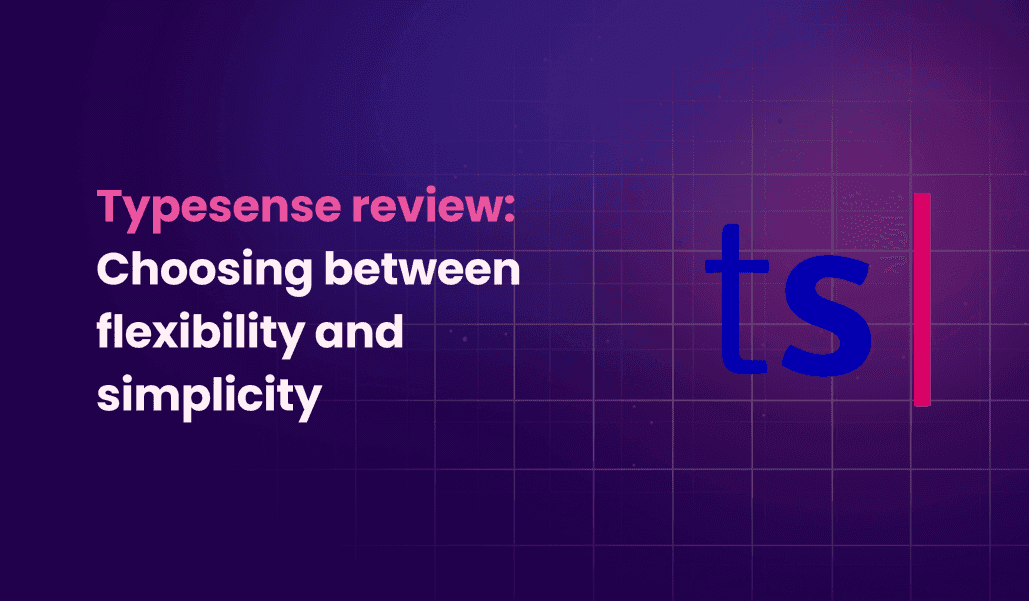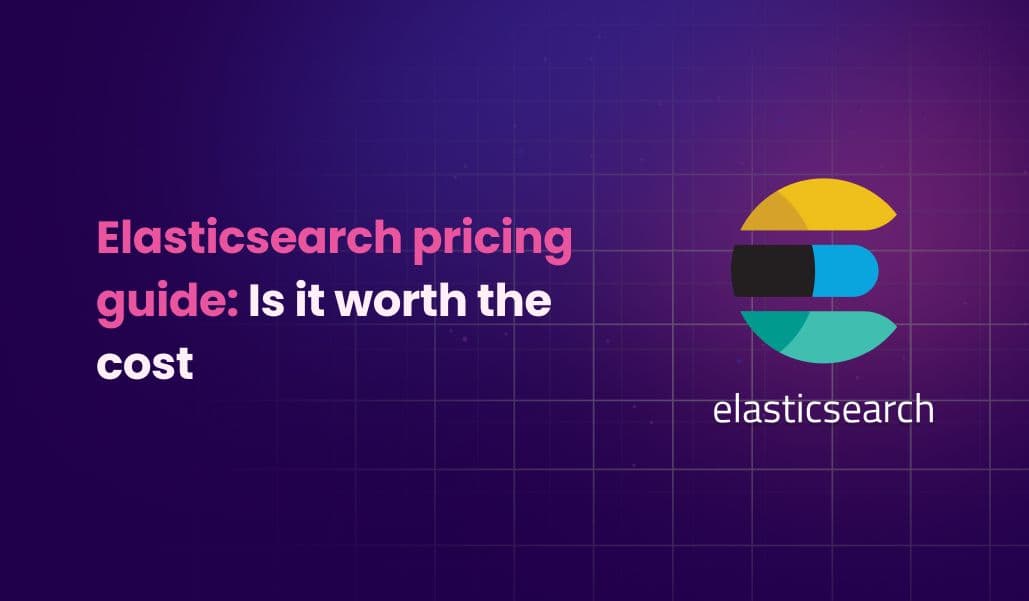Intranet search engines: What you need to know in 2025
Understand what intranet search engines are, how they work, and why they matter, plus key features, benefits, best practices, and more.

In this article
Employees across industries spend countless hours online searching for documents, policies, and answers, only to end up staring at pages and pages of irrelevant search results.
When internal search doesn’t work, productivity suffers, information is siloed, and morale takes a hit.
A smart intranet search engine changes that. It delivers fast, relevant answers and helps teams get work done without the digital scavenger hunt.
In this guide, you’ll learn everything you need to know before choosing or building an intranet search system for your organization, including:
- What an intranet search engine does and how it’s different from a typical internal search tool.
- How search engines for intranets work under the hood.
- Key benefits of better intranet search in an organization.
- Common reasons why most intranet searches fall short.
- Features that matter most, including AI-driven personalization and security.
- Top ready-to-use and open-source tools worth exploring.
- Steps to build a custom solution from scratch.
- Optimization tips to improve accuracy, speed, and satisfaction.
What is an intranet search engine?
An intranet search engine is a tool that helps employees quickly find internal information – whether documents, messages, files, or tools – across a company’s internal systems. Unlike a search engine like Google, which crawls the entire web, intranet search engines focus exclusively on one organization's private data.
In essence, an intranet search engine delivers fast and relevant search results from internal sources. When done right, it transforms how employees access knowledge, saving time and reducing frustration.
Now, let’s see how exactly these systems work.
How does an intranet search engine work?
At its core, an intranet search engine finds and ranks content stored across a company’s internal systems.
It does this through a multi-step process:
- Crawling: The search engine scans internal sources – files, folders, wikis, databases, and communication tools – to discover and collect content.
- Indexing: It organizes and stores this content in a searchable index, tagging it with relevant keywords and metadata. Like it’s building a detailed internal map of an organization’s knowledge.
- Querying: When a user enters a search term, the engine checks the query against the index, looking for matching content.
- Ranking: The engine ranks the results based on relevance, using factors like keyword frequency, location, freshness, and context. The goal is to show the most useful results first.
- Enhancements (optional): More advanced systems use Natural Language Processing (NLP) to understand user intent beyond exact keywords. Some also support federated search, which pulls results from multiple internal systems into one unified view.
Next, let’s look at how intranet search differs from other types of internal search.
What is the difference between internal and intranet search engines?
Although the terms intranet and internal search are often used interchangeably, their purposes in an organization are very different.
An intranet search engine provides employees with all the important information from the entire internal digital environment. It helps them access the data they need, no matter where it lives.
On the other hand, an internal search engine operates within a single platform. Think of the search bar inside your CRM or helpdesk. It works well, but only within that one tool.
Here’s how they compare.

Intranet search connects your whole ecosystem. Internal search zooms in on one piece of it.
Let’s break down why that matters for your business.
Why is intranet search important for organizations?
When employees can’t find what they need, work slows down. Time is wasted, frustration builds, and productivity takes a hit.
An effective intranet search engine flips that script. It makes internal content easily accessible, no matter where it lives, so people can focus on their work, not the hunt.
Here’s what a strong intranet search unlocks:
- Higher productivity: Employees stop digging through folders or pinging coworkers for links.
- Faster decision-making: Quick access to relevant data leads to smarter, faster choices.
- Better collaboration: Teams stay well coordinated when content is easy to find and up to date.
- Fewer repeated tasks: Past work is searchable, so employees aren’t constantly starting from scratch.
- Happier teams: Less friction means smoother workflows and more time for meaningful work.
When the intranet search works well, everything else becomes easier.
But building a reliable system starts with understanding its limitations.
What are the common challenges with intranet search engines?
Sometimes, intranet engines fail. This can be for a number of reasons, including poor implementation, technical limits, or a lack of structure.
Here are common issues organizations face with intranet search and how to fix them.
1. Incomplete indexing
When a search engine fails to index all relevant files, employees miss out on information that could’ve been essential to their role or projects. This usually happens due to improper configuration, limited permissions, or outdated systems.
A smart search engine, such as Meilisearch, can tackle this by crawling and surfacing content based on real-time changes.
2. Irrelevant results
Few things are more frustrating than searching for something specific and getting a wall of noise in return. When search results feel random or off-topic, it’s usually due to poor ranking logic, keyword matching without context, or an engine that doesn't understand user intent.
To fix this, you can use a relevance-focused engine that supports semantic search and contextual ranking.
3. Inconsistent tagging and metadata
If your teams aren’t aligned on how they name or tag content, your search engine won’t be either. Imagine one team saving a file as ‘Revenue-Q3-Final’, another calling it ‘Quarterly_Income_July-Sept’, and a third just naming it ‘report123’.
Without a consistent taxonomy and metadata, even a good search engine struggles. The solution is to handle this with customizable filters and flexible schema indexing, so teams can surface the right content even when naming conventions vary.
4. Security and permission conflicts
In the case of intranet search engines, there needs to be a balance between access control and usability. An improper setup can expose sensitive organizational data to the wrong individuals.
Meilisearch supports fine-grained access control and works well with authentication layers, so every employee sees only what they’re supposed to. This keeps both compliance and productivity in check.
Let’s now explore what features truly matter when picking the right intranet search engine.
What features should you look for in an intranet search engine?
We’ve explained the basic premise of an intranet search engine. But what is the core requirement you must focus on while choosing or building one?
Let’s have a look below.

- Filters and faceted search: Helps users narrow down results by department, document type, or date.
- Natural language support: Makes search feel intuitive by interpreting everyday phrases rather than just keywords.
- Typo tolerance: Users make typing mistakes. Your search tool should still deliver helpful results even with misspellings.
- Synonym recognition: Makes sure terms like ‘benefits’ and ‘compensation' or ‘HR’ and ‘People Ops’ lead to the same results.
- Ranking rules: Prioritizes high-value content so important information always comes first.
- Personalization: Delivers context-aware results by tailoring what’s shown based on department, role, or search history.
- Access controls: Ensures users only see content they’re authorized to access, which is key for security and compliance.
- Speed and scalability: Results should appear instantly, even with large document volumes or high query traffic.
- Multi-language support: Useful for global teams or multilingual workforces needing consistent search experiences across languages.
Now it’s time to look at some of the best out-of-the-box intranet search engine options.
What are the best out-of-the-box intranet search engines?
Organizations looking for ready-made intranet search tools have strong options that offer speed, easy integration, and thoroughness.
1. Guru
Guru is a knowledge management platform with an AI-powered intranet search. It connects with Slack, Teams, and internal wikis to give employees fast, verified answers without switching tools.
2. Coveo
Coveo delivers smart enterprise search with AI recommendations and analytics. It’s widely used in customer service and knowledge management, with built-in connectors for CRMs and content systems.
3. Apache Solr
Apache Solr is a reliable, open-source engine used in many enterprise intranet setups. Its real-time indexing and faceted search capabilities make it ideal for scaling and customizing internal search experiences.
Now, let’s look at the best open-source intranet search engines.
What are the best open-source intranet search engines?
When choosing an open-source search engine for your intranet, you want speed and scalability (and maybe customization for advanced users). It should be flexible enough to integrate with your internal systems without requiring a massive DevOps setup.
Here are three of the top picks:
1. Meilisearch
Meilisearch wouldn’t be Meilisearch without its lightning-fast performance and developer-friendly setup. Its key features, such as typo tolerance, semantic search, and ranking rules, make it a prime option in this context, even though it is not specifically built for intranets.
2. Typesense
Typesense is a developer-first alternative that prioritizes simplicity and speed. Its easy-to-deploy architecture and support for real-time updates make it great for teams that want control without the headache of a heavy infrastructure.
3. OpenSearch
Forked initially from Elasticsearch, OpenSearch offers top-tier scalability and strong analytics. It’s a fit for enterprises that require a full-text search to go with advanced monitoring, logging, and role-based access.
Are you looking to build your own intranet search stack?
Let’s walk through that next.
How do you create a custom intranet search engine?
Building your own intranet search engine with Meilisearch gives you complete control and flexibility. You can customize ranking, typo tolerance, and data schema based on your company’s needs.
Below are clear steps with Go code to get you started:
1. Set up Meilisearch and Go client
First things first, let’s start a Meilisearch instance either locally or in a secure cloud environment.
Then connect from your Go backend using the official SDK:
import "github.com/meilisearch/meilisearch-go" client := meilisearch.NewClient(meilisearch.ClientConfig{ Host: "http://127.0.0.1:7700", APIKey: "masterKey", })
This establishes a fast, secure connection for indexing and querying your intranet content.
2. Create an index and upload documents
Next, define an index and push your internal documents like PDFs, wiki pages, and support files into Meilisearch:
index := client.Index("intranet_docs") docs := []map[string]interface{}{ {"id": "1", "title": "Employee Handbook", "content": "Policies..."}, {"id": "2", "title": "IT Guide", "content": "Setup instructions..."}, } task, err := index.AddDocuments(docs)
This builds a structured map of your content for typo-tolerant search.
3. Configure relevance and search features
Finally, fine-tune the ranking and user experience:
index.UpdateRankingRules(&[]string{ "typo", "words", "proximity", "attribute", "exactness", }) index.UpdateSynonyms(&map[string][]string{ "hr": {"human resources"}, }) index.UpdateSettings(&meilisearch.Settings{ TypoTolerance: &meilisearch.TypoTolerance{Enabled: meilisearch.Bool(true)}, })
With these three steps, you’ve built a search engine powered by Meilisearch that’s fast and specific for your intranet.
How do you choose the right intranet search engine for your needs?
Not all intranet search engines are built the same. Some are plug-and-play. Others give you complete control. The right choice depends on your team’s technical skill, budget, and internal complexity.
Here’s a quick look at the differences across the three main types: out-of-the-box, open-source, and custom-built intranet search engines.

Next, we’ll look at how to get the most out of your intranet search engine performance.
How do you optimize intranet search engine performance?
Even the best intranet search engine needs regular tuning to stay on point. As your organization evolves, so do its data, tools, and user behavior, making room for some much-needed optimization.
Let’s explore some of the most impactful ways to optimize performance:
1. Add rich metadata to your content
Metadata helps search engines understand each document's content. It adds context like document type, department, author, or publication date to improve indexing and ranking. When metadata is structured and consistent, users find what they need faster.
Example:
{ "title": "Employee Benefits 2025", "type": "HR Document", "author": "Jane Smith", "tags": ["benefits", "healthcare", "HR"], "department": "Human Resources" }
In Meilisearch, you can include metadata as part of the searchable attributes and use ranking rules to boost results based on priority fields like department or publication date.
2. Enable typo tolerance and synonym matching
Employees make mistakes when typing, especially on internal acronyms or jargon-heavy terms. Typo tolerance helps capture near matches, while synonym support enables users to get hits for terms like ‘vacation’ and ‘PTO.’
Meilisearch example:
curl -X POST 'http://localhost:7700/indexes/docs/settings/synonyms' --data '{ "pto": ["paid time off", "vacation"], "hr": ["human resources"] }'
This creates a smoother, more forgiving search experience without requiring perfect spelling or phrasing.
3. Keep your content regularly indexed
Outdated or missing records frustrate users. To avoid this, you need to make sure your search engine updates its index frequently to reflect new or edited content. For fast-changing data, set up an automated schedule or trigger-based indexing.
Example script for Meilisearch using Node.js:
const { MeiliSearch } = require('meilisearch') const client = new MeiliSearch({ host: 'http://localhost:7700' }) const index = client.index('documents') // Assuming newDocuments is your latest content await index.addDocuments(newDocuments)
This keeps search results fresh and relevant as your organization grows.
4. Use user behavior to refine results
Analytics can tell you what users are searching for, what they’re clicking on, and where they’re dropping off. That data can help identify gaps in relevance and update synonyms, filters, or ranking rules accordingly.
Insightful metrics to track include:
- Click-through rates on search results
- Queries with no results
- Most common terms per department
Over time, this feedback loop and strategic refinement will significantly improve performance.
5. Fine-tune ranking rules
In Meilisearch, ranking rules control how search results are ordered. You can prioritize by freshness, department, popularity, or even metadata tags to guarantee that internal resources always rise to the top.
Sample ranking rule order:
[ "words", "typo", "proximity", "attribute", "exactness", "desc(date_published)" ]
You can adjust this to reflect how your team searches and what matters most.
Building a smarter intranet search experience
A powerful intranet search engine unlocks your team’s full potential. When information is buried, scattered, or outdated, frustration sets in and productivity suffers.
The right solution brings clarity to the chaos. It helps employees find the knowledge they need quickly, accurately, and securely so they can focus on meaningful work.
Whether upgrading your current system or building one from scratch, investing in smarter search is one of the most effective ways to boost efficiency across your organization.
Why Meilisearch is a strong fit for modern intranet needs
Meilisearch offers the flexibility, performance, and relevance modern organizations need. It’s fast and customizable. Plus, features like typo tolerance, ranking rules, and language support are ideal for building tailored internal or site search systems that scale.


